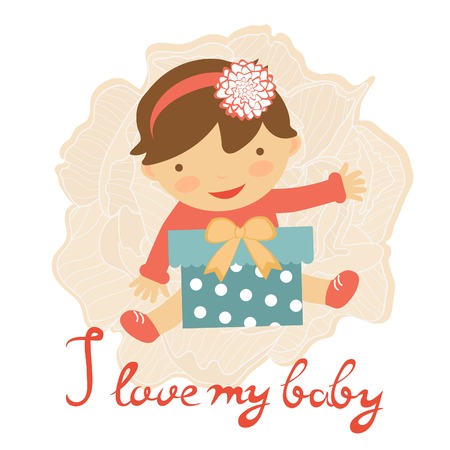1. Introduction to Baby Sign Language
Baby sign language is a way for infants and toddlers to communicate before they can speak. It involves using simple hand gestures or signs that represent words or concepts, helping babies express their needs and emotions effectively.
Why Use Baby Sign Language?
Many parents introduce baby sign language as a tool to bridge the gap between understanding and speaking. Since babies develop motor skills earlier than verbal skills, signing allows them to communicate basic needs like “milk,” “more,” or “sleep” without frustration.
Benefits of Baby Sign Language
Using baby sign language can provide several advantages for both babies and caregivers:
| Benefit | Description |
|---|---|
| Reduces Frustration | Babies can express themselves before they learn to talk, decreasing tantrums. |
| Encourages Early Communication | It helps babies understand the connection between words and actions. |
| Strengthens Parent-Child Bond | Parents become more attuned to their babys thoughts and feelings. |
| May Boost Verbal Skills | Studies suggest that signing can support language development rather than hinder it. |
When to Start Teaching Signs?
Most experts recommend introducing baby sign language around 6 months of age, when babies begin to show interest in communication. However, some parents start as early as 4 months, while others wait until their child is closer to 9 months.
Common First Signs
If youre new to baby sign language, start with a few essential signs that are easy for your baby to recognize and use:
- Milk: Open and close your fist like you’re milking a cow.
- More: Touch fingertips together repeatedly.
- Eat: Tap fingers to lips as if bringing food to your mouth.
- All Done: Rotate both hands outward as if brushing something away.
- Mama/Dada: Tap your thumb on your chin for “Mama” and forehead for “Dada.”
Does Baby Sign Language Delay Speech?
A common concern among parents is whether teaching signs will delay spoken language. Research suggests the opposite—babies who learn signs often speak earlier than those who dont because they develop a stronger understanding of communication.
How Baby Sign Language Complements Spoken Language
The goal of baby sign language is not to replace speech but to enhance it. Parents should always say the word while making the sign so that babies associate the gesture with spoken language.
By incorporating signs into daily routines, caregivers can create a richer learning environment that fosters early language development while reducing frustration for both parent and child.
2. How Baby Sign Language Supports Spoken Language Development
Some parents worry that teaching their baby sign language might delay their ability to speak. However, research and real-life experiences show the opposite—signing can actually help enhance verbal language development. By using simple hand gestures alongside spoken words, babies build a stronger foundation for communication.
Building a Connection Between Signs and Words
When parents use signs while speaking, they reinforce the meaning of words in multiple ways. Babies see the sign, hear the word, and associate both with an object or action. This multi-sensory learning strengthens language comprehension and memory.
Encouraging Early Communication
Babies often understand more than they can verbally express. Sign language gives them a way to communicate their needs before they develop spoken words, reducing frustration and tantrums. As they gain confidence in expressing themselves, they naturally transition to verbal speech.
Strengthening Brain Development
Using signs engages different areas of the brain responsible for language processing and motor skills. Studies suggest that babies exposed to sign language may develop stronger cognitive abilities, better problem-solving skills, and even a larger vocabulary as they grow.
Comparing Baby Sign Language and Spoken Language Development
| Aspect | Baby Sign Language | Spoken Language |
|---|---|---|
| Age of First Use | Around 6-9 months | Around 12 months |
| Main Benefit | Allows early communication | Expands vocabulary |
| Cognitive Impact | Boosts memory and understanding | Enhances speech fluency |
| Emotional Benefit | Reduces frustration | Encourages social interaction |
No Risk of Delayed Speech
A common myth is that babies who use signs will rely on them instead of speaking. However, most children naturally shift from signing to verbal speech as they grow older. In fact, many studies show that children who learn baby sign language tend to develop spoken language skills earlier than those who do not.

3. Common Baby Signs and Their Meanings
Teaching your baby sign language can be a game-changer in early communication. Babies often understand more than they can express verbally, and using simple signs helps bridge that gap. Below is a list of essential baby signs that can help your little one communicate their needs and feelings effectively.
Essential Baby Signs
Here are some common baby signs along with their meanings and how to perform them:
| Sign | Meaning | How to Do It |
|---|---|---|
| Milk | Your baby wants milk (breastmilk or formula). | Open and close your fist as if youre milking a cow. |
| More | Your baby wants more food, play, or attention. | Touch the fingertips of both hands together repeatedly. |
| All Done | Your baby is finished with an activity or meal. | Turn both hands outward, palms up, in a flipping motion. |
| Eat | Your baby is hungry and wants food. | Tap your fingers to your lips as if bringing food to your mouth. |
| Sleep | Your baby is tired and ready for sleep. | Bunch your fingers together and bring them to the side of your face while tilting your head slightly. |
| Mama/Dada | Your baby is calling for mom or dad. | Tap your thumb to your chin for “Mama” and forehead for “Dada.” |
The Benefits of Using Baby Signs
Using these basic signs can make daily routines smoother for both parents and babies. Instead of crying out of frustration, babies can use signs to express what they need, reducing stress for everyone. It also encourages early language development by reinforcing spoken words with gestures. Over time, as your babys verbal skills improve, they will naturally transition from signing to speaking.
Tips for Teaching Baby Sign Language
- Start Simple: Introduce just a few key signs at first, like “milk” or “more.”
- Say the Word: Always say the word while making the sign so your baby connects the two.
- Be Consistent: Use the same sign every time in relevant situations.
- Praise Efforts: Encourage any attempt at signing, even if it’s not perfect.
- Makes It Fun: Use signs during songs, mealtime, and playtime to keep learning engaging.
The earlier you introduce signs, the sooner your baby can start using them. Every child learns at their own pace, so patience is key. With regular practice, youll soon see how signing strengthens communication between you and your little one!
4. When and How to Introduce Baby Sign Language
Best Age to Start Teaching Baby Sign Language
Many parents wonder when the right time is to start introducing baby sign language. While every baby develops at their own pace, most experts recommend starting between 6 to 9 months. At this age, babies begin to develop the motor skills and cognitive abilities needed to understand and use signs.
However, if your baby is older than 9 months, it’s never too late to start! Even toddlers can benefit from learning basic signs to help them express their needs before they develop strong verbal communication skills.
Effective Techniques for Teaching Signs
Introducing baby sign language should be fun and engaging. Here are some simple techniques to make learning easy and effective:
1. Start with Basic and Useful Signs
Begin with a few essential signs that relate to your baby’s daily needs. Common first signs include:
| Sign | Meaning |
|---|---|
| Milk | Squeeze your hand like youre milking a cow. |
| More | Touch fingertips of both hands together repeatedly. |
| All Done | Turn hands outward as if brushing something away. |
| Mama/Dada | Tapping chin (Mama) or forehead (Dada) with thumb. |
2. Use Signs Consistently in Daily Routines
The key to success is repetition! Use signs during meals, playtime, and bedtime routines so your baby can associate them with familiar activities.
3. Say the Word While Signing
Always say the spoken word while making the sign. This helps reinforce both verbal and visual learning, encouraging your baby to connect the two forms of communication.
4. Be Patient and Encourage Attempts
Your baby may take weeks or even months before using signs consistently. Celebrate small attempts and praise any effort they make, even if their signing isn’t perfect at first.
5. Make It Fun!
Singing songs, playing games, and using picture books alongside signing can keep your baby engaged and excited about learning new signs.
5. Cultural Acceptance and Practical Use in Everyday Life
In American culture, baby sign language is becoming more widely accepted as parents recognize its benefits. While not every family chooses to use it, many find that incorporating signs into daily routines helps improve communication and reduce frustration for both parents and babies.
How Baby Sign Language Is Viewed in American Culture
Over the years, baby sign language has gained popularity in the United States. Many parents, educators, and childcare providers see it as a valuable tool for early communication. However, some misconceptions still exist. Some people worry that using signs might delay spoken language development, but research has shown that baby sign language actually supports verbal skills rather than replacing them.
Common Misconceptions vs. Reality
| Misconception | Reality |
|---|---|
| Baby sign language delays speech development. | Studies show that signing can enhance verbal skills by encouraging early communication. |
| Only deaf children benefit from baby sign language. | Babies with normal hearing can also benefit from signing by reducing frustration and improving understanding. |
| You need to learn an entire sign language system. | Parents can start with just a few simple signs related to daily activities. |
Integrating Baby Sign Language into Daily Routines
The best way to make baby sign language effective is to incorporate it naturally into everyday life. Here are some practical tips:
Start with Basic Signs
Began with common words like “more,” “milk,” “eat,” and “all done.” These are useful during mealtime and other daily activities.
Use Signs Consistently
The more often you use signs along with spoken words, the quicker your baby will learn them. Repetition is key.
Make It Fun
Singing songs, playing games, and using expressive facial gestures can make learning signs enjoyable for your baby.
Encourage Others to Participate
If caregivers, grandparents, or daycare staff also use signs, your baby will pick them up faster through consistent exposure.


